Man Wah
An Iconic Dim Sum Landmark combining Tradition with Innovation in Hong Kong
I find Cantonese style dining difficult to write about. Perhaps my familiarity with the cuisine, but also because courses are often served family style all at once, without individual portioning and plating. This makes photography and careful documentation a frenzied rush before everyone digs in. Dim sum is a little different -small steamer baskets or plates of individual bite-sized portions presented one at a time.
A culinary tradition from Southern China, the term “dim sum” translates to “touching the heart” in Cantonese and its origins trace back over a thousand years to the Tang and Song dynasties, when teahouses along the Silk Road in southern China became popular rest stops for travelers. These teahouses served tea with small snacks, a practice called yum cha ("drinking tea"). Over time, the food offerings expanded, evolving into the diverse dim sum we know today. By the 10th century, teahouses in Guangdong formalized this tradition, offering bite-sized portions of steamed, fried, or baked dishes.
During the 19th and 20th centuries, dim sum flourished in Guangzhou and Hong Kong, becoming a social and culinary institution. Cantonese chefs refined the art, creating delicate dumplings, buns, and rolls with intricate techniques. The tradition spread globally with Chinese international migration, especially to Chinatowns in cities like Toronto, New York, and London, where dim sum restaurants became cultural hubs.
Dim sum is more than food; it’s a communal and social experience deeply rooted in Cantonese culture. Traditionally served during brunch or lunch, dim sum meals are a time for families and friends to gather, share stories, and bond over steaming bamboo baskets. The yum cha ritual - sipping tea while enjoying small plates - emphasizes relaxation and social connection.
The individual portioning of each dumpling, bun, meatball or tart allows the restaurant to demonstrate the delicate techniques of its masters, passed down generation to generation, with chefs mastering the techniques over decades in the kitchen.
The social aspect of dim sum makes it great for meetings, and I met an old ex-colleague at Man Wah. The restaurant is an iconic piece of Hong Kong history, originally opened in 1968, and earning a single Michelin star 12 years in a row.
The kitchen is run by Chef Wong Wing-Keung, a third-generation Cantonese chef, Wong first joined Man Wah as sous chef in 2011, leaving briefly to earn his first Michelin Star at the helm of Yee Yung Heen, before returning to helm Man Wah. His culinary philosophy centers on hard work, continuous learning, and preserving the complexities of Cantonese cuisine while introducing subtle modern twists.
In interviews, Wong has shared that his father, a culinary mentor, taught him the importance of understanding ingredients deeply, though he learned cooking techniques through observation and practice. Wong’s passion for Cantonese cuisine is evident in his mission to carry its legacy forward.
I arrived a bit late to the meeting, and didn’t manage to get the normal pictures of the dining room or the view. The restaurant was renovated in 2021 to an unusual dark blue palette with references to Chinese lanterns and classic bird cages accenting the walls and ceiling.
Lunch started with two kinds of soup dumplings
A traditional Cantonese style giant “half soup dumpling” that is slowly being lost to time. Modern variations requiring less labour and technique have the dumpling filled with bite-sized chunks of seafood and the dumpling presented in a broth, while the classical style has the hot soup encapsulated inside a giant dumpling along with diced shrimp, scallop, pork, and mushrooms. This dumpling is usually served with a bit of seasoned red vinegar to add a bit of acid to the dish.
A Shanghainese style “little dragon dumpling” traditionally made with pork and ginger and gelatinized pork broth. In the winter, during hairy crab season, a popular variation uses crab roe in addition to the pork. The xiao long bao presented here was the classic all pork style, which is usually dipped into a plate of aged vinegar with a bit of ginger to prevent the “meatiness” of the pork from overwhelming the dumpling.
Two staples of dim sum - har gow and siu mai. These two dishes are served at almost every dim sum restaurant and is a good gauge of the kitchen’s mastery of the intricate techniques.
Crystal shrimp dumplings (“har gow”) - a translucent tapioca starch wrapper. The filling highlights the freshness and size of the shrimp, but also includes a bit of bamboo shoot for texture, lard for mouthfeel, a bit of sesame oil for aroma and a variety of seasonings.
Shrimp and pork dumplings (“siu mai”) - a similar steamed dumpling to the har gow, but with variations on the wrapper and the filling. The wrapper is standard wonton wrapper, surrounding a filling of pork and shrimp. There is a lot of variation in the dish. I’ve seen versions adding water chestnut for a bit of crunch, topped with a scallop of a quail egg. This version was topped with salmon roe and a piece of parsley as a garnish.
Some fried and baked dishes next:
Deep fried taro puffs (“wu gok”) - a savory pork mince surrounded by mashed boiled taro and deep fried. The deep frying creates a fragile but light and crispy exterior. Traditionally, the taro puffs are served fried to a beautiful golden brown, but the more modern version version at Man Wah added diced morel mushrooms and abalone along with the pork mince and were coloured pink and green to look a bit like a puffy radish or strawberry.
Salt water dumpling (“ham sui gok”) - a similar savory pork mince, but wrapped with a heavy, sticky glutinous rice mochi wrapper. This one was topped with a piece of kale, shaped to a point at the bottom and buried in some breading, making it look like golden brown carrots buried in the dirt. Amusing and delicious!
Classic egg tarts (“dan tat”) - a egg custard tart whose history has been lost to time. Countless variations exist - Macau-style Portuguese tarts that caramelize the top, coloured and flavoured custards - using milk, matcha, cheese, chocolate custards in addition to, or instead of the traditional vanilla egg custard, and variations in crust, using a fluffy puff pastry crust or a shortbread-style crust. Hong Kong egg tarts are so iconic that they were recognized as part of Hong Kong’s intangible cultural heritage. Man Wah served a very classical style puff-pastry style crust around a barely set egg custard.
Moving into some dishes that veer away from traditional dim sum, but we tried simply because they looked interesting. A pan-fried Hokkaido scallop, topped with gold flake and caviar in a sticky demi-glace with morel mushrooms. A perfect sear on the scallop, finishing just short of cooked through, pairing well with the savory sauce.
The next dish is more often served at banquet dinners than dim sum lunches. A crab claw surrounded with a minced shrimp paste, breaded and deep fried. Often served with the same seasoned red vinegar as the half soup dumplings from early on. This one was particularly overstuffed with shrimp paste to the point that I could barely find the original crab claw!
Next, a dish unique to Man Wah, demonstrating the some of their artistry and creative inspiration of the kitchen. Two mini goldfish dumplings, and a pile of lobster meat sauteed with egg and sea urchin placed on a thickened clear sauce on a flat bed of steamed egg white with a fragrant shaoxing rice wine. A clever repurposing of Chinese cooking techniques - the steamed egg white with rice wine is often done as as a preparation for crab. The mini goldfish dumplings using a wrapper similar to har gow, although folded and patterned in a different way. Really neat presentation and not what I was expecting at all.
A good Chinese meal always ends with a starch - usually some form of rice or noodles. We went with another Hong Kong classic - dried fried beef noodles, combining flat rice noodles, thin slices of beef, green onions, bean sprouts in a searing hot wok.
The measure of a good dish of fried noodles is the “wok hei”, literally translated as wok air, something a bit difficult to describe, but you know if when you get it. It’s a combination of smokiness, char and caramelization of the ingredients being actively tossed in a red hot wok under screaming jet burners. It’s something that really marks good Chinese cooking, and is difficult to impossible to recreate outside a commercial kitchen. This version added a bit of homemade XO sauce for a hit of umami and spice, foregoing the pungent mustard that the dish is usually served with.
For a theatric dessert, Man Wah’s take on a classic Hong Kong favourite. The classic version of this dessert pairs diced mango chunks, pomelo, tiny sago balls in a chilled soup of mango juice and coconut milk. Allegedly it was first served at a Lei Garden restaurant in Singapore in 1984, but is now a widespread favourite at dessert shops all over Hong Kong. Man Wah reinvents the dessert, replacing the mango with figs and presenting it in a cloud of dry ice.
Finally, some petit fours - highlighting two other classic Hong Kong dessert - a red bean sweet soup, made into a jelly, and classical Chinese sesame cookies.
Overall, this has been one of my better visits to Man Wah. If you stick strictly to the dim sum menu, the execution is pretty good, but not exceptional, but the variety falls short of what would be expected from a proper dim sum restaurant. However, once we went a little off piste and ventured into the a la carte menu, there were enough unique dishes, masterfully executed to warrant future visits. Would return.
Total Damage: 4800 HKD/2 people



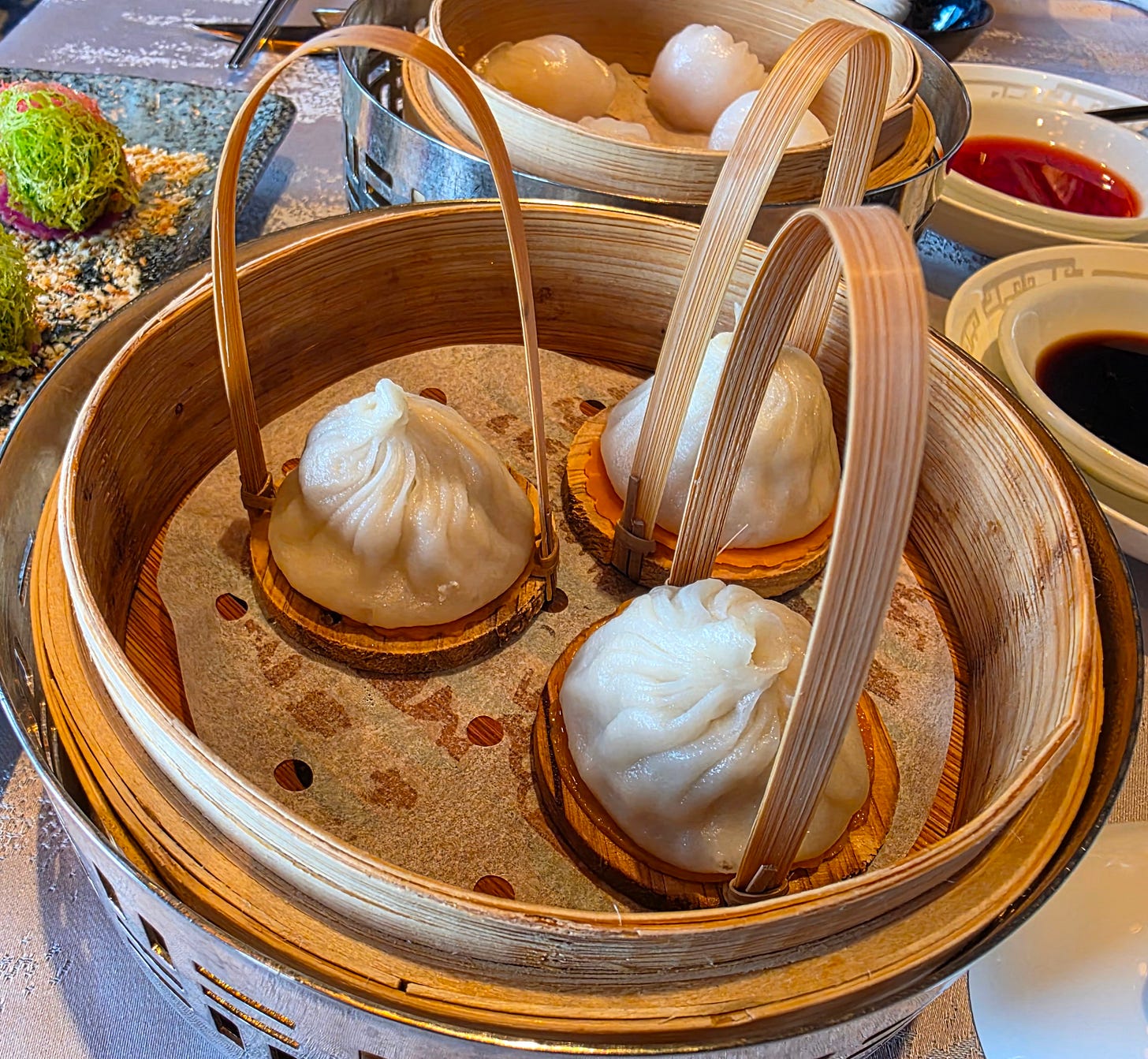
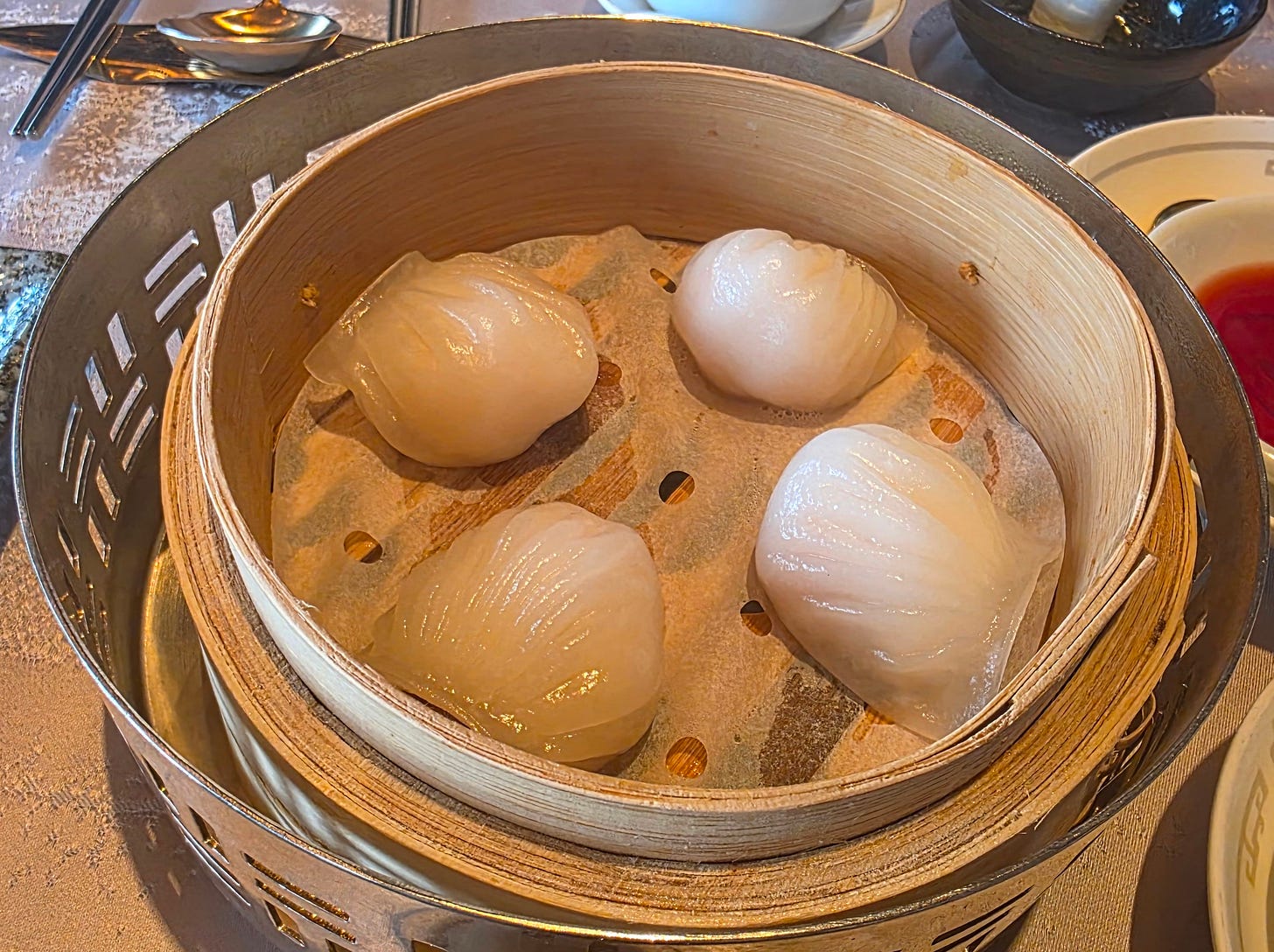
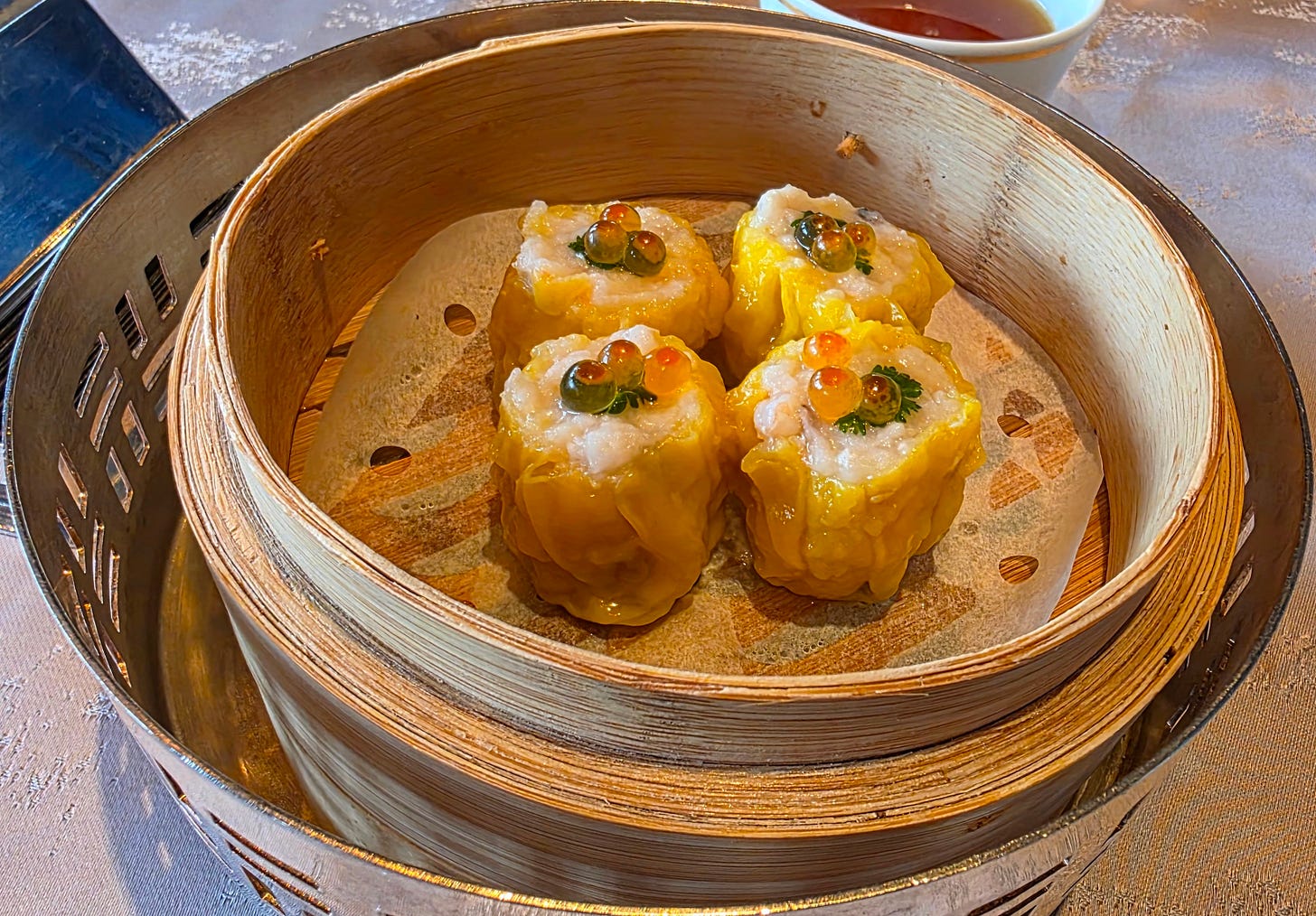
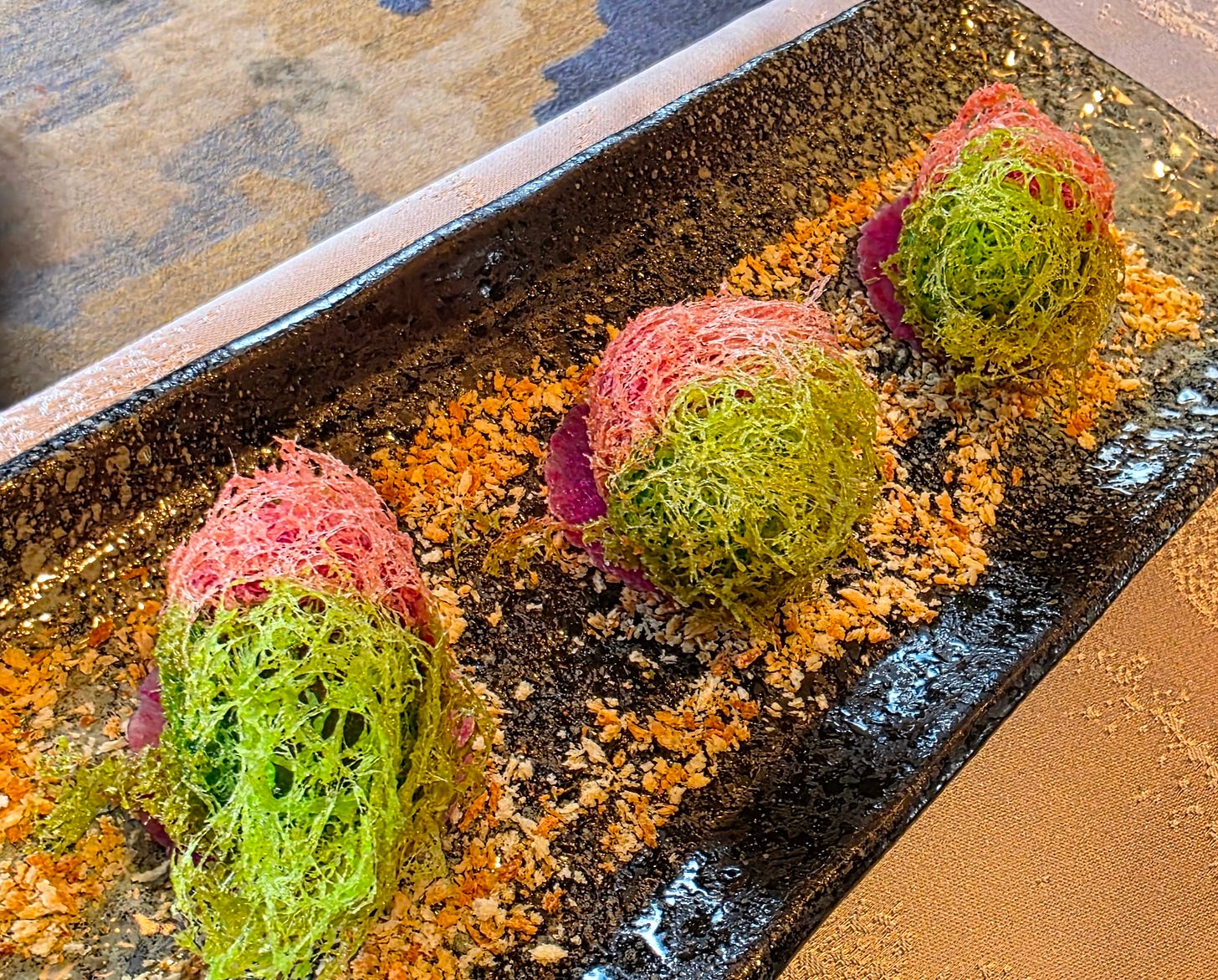
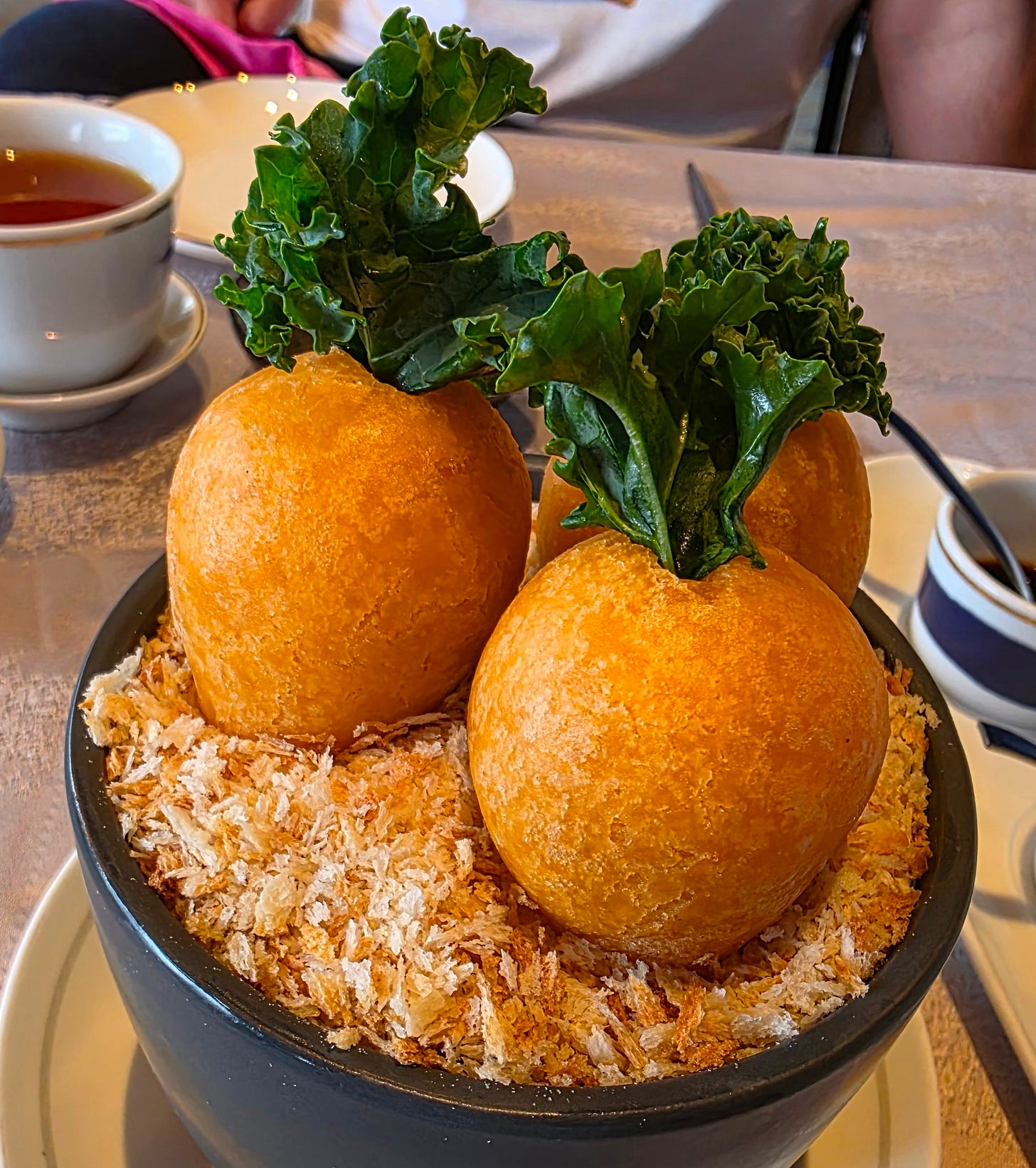
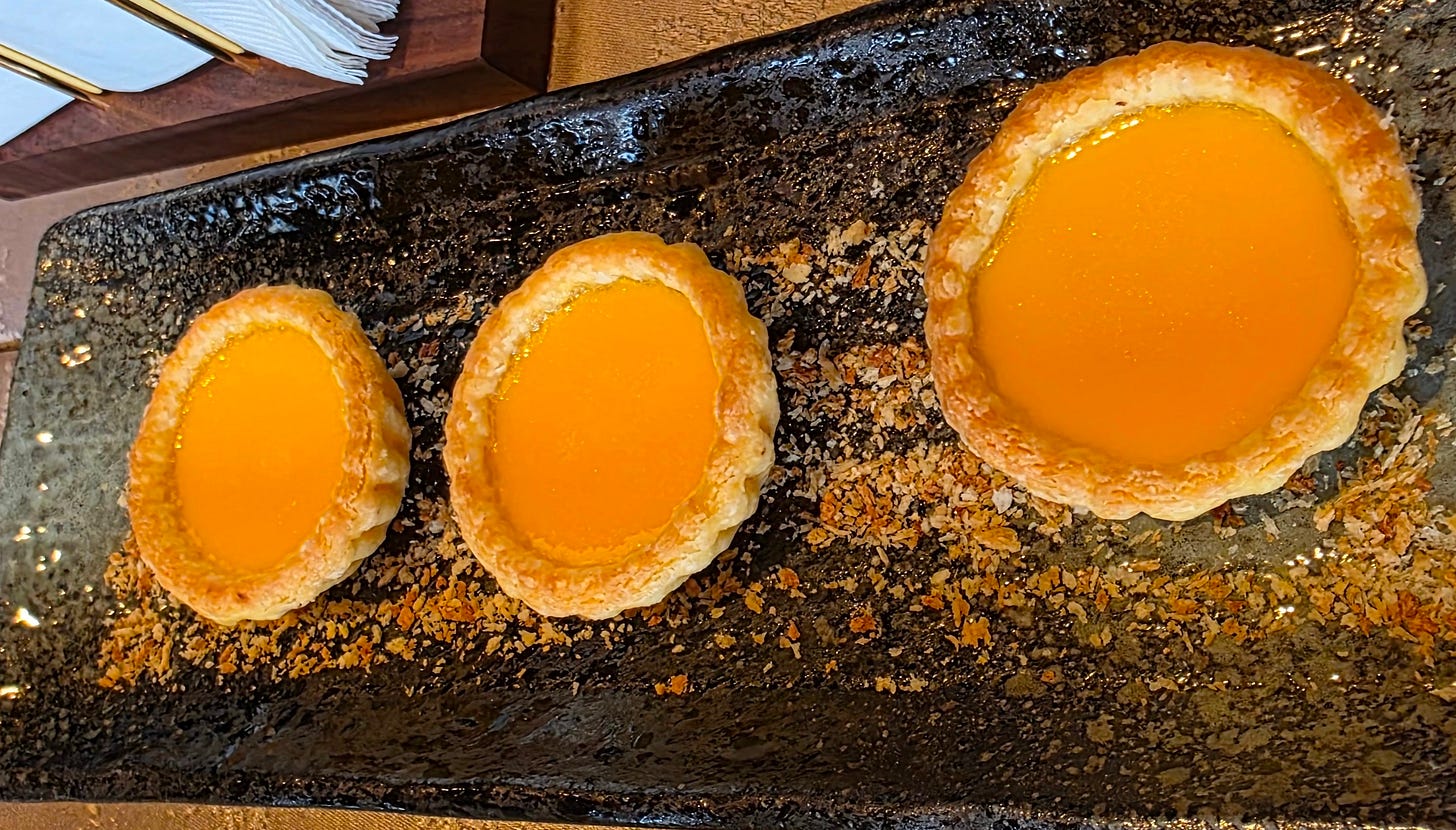
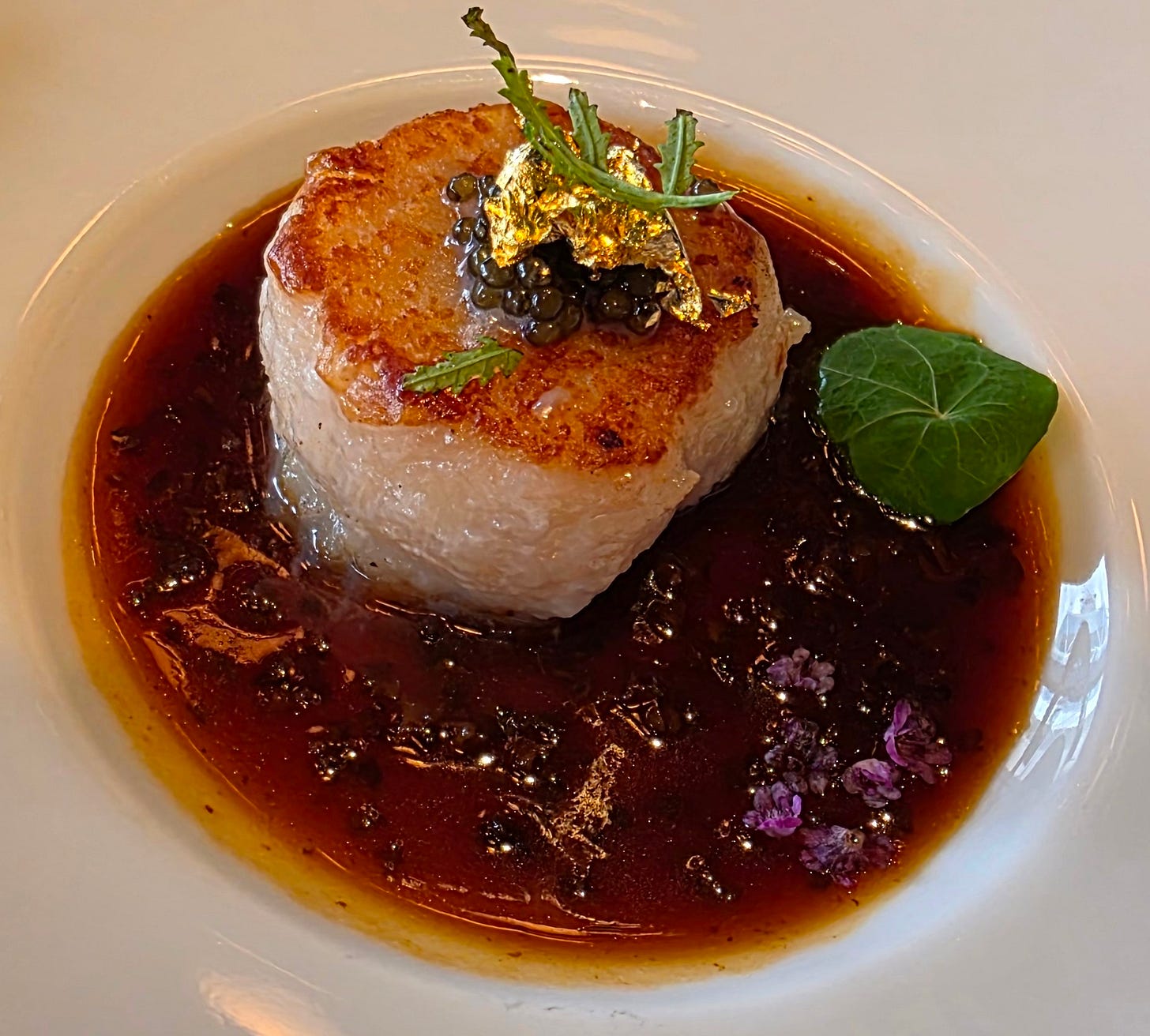
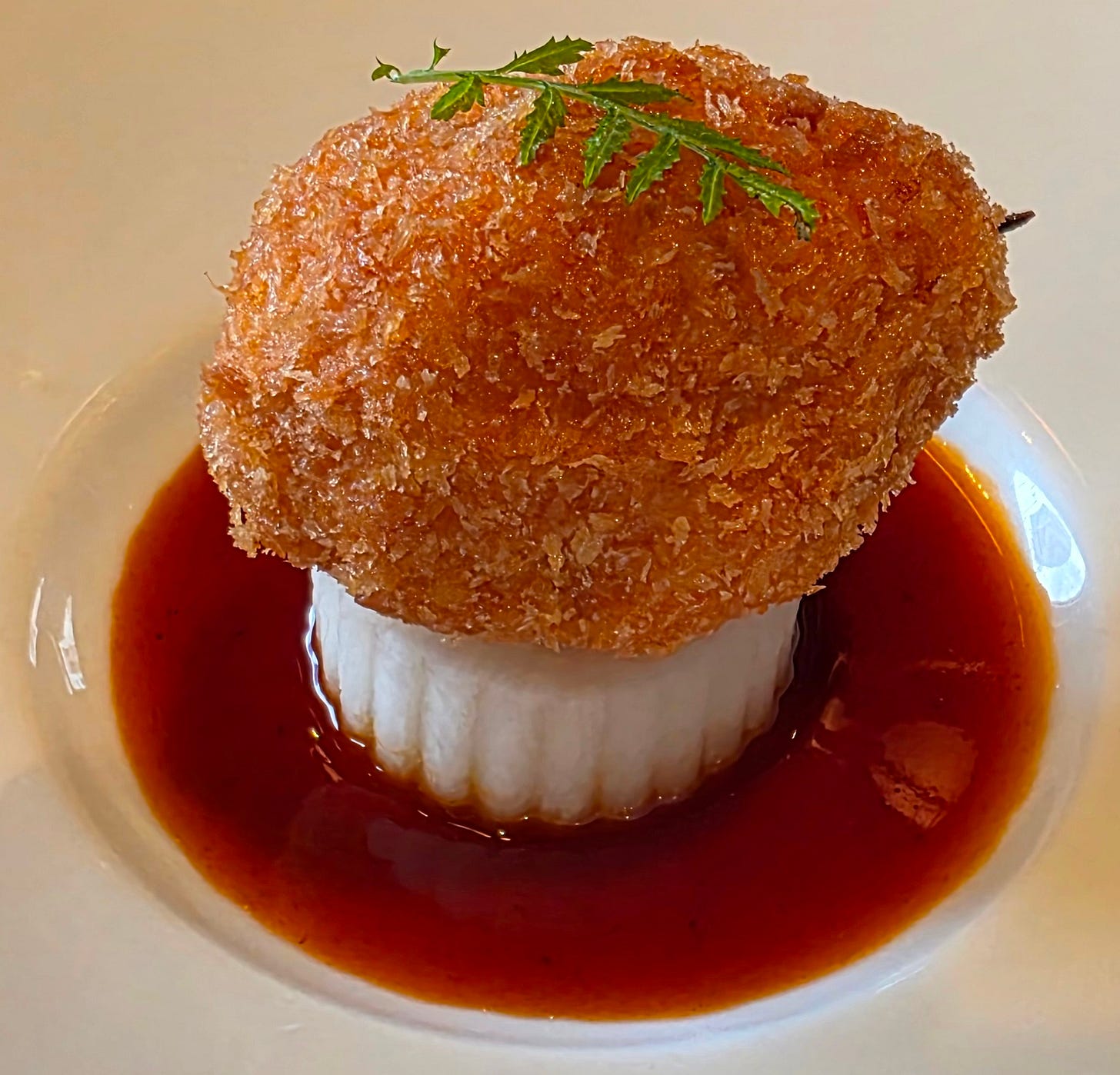
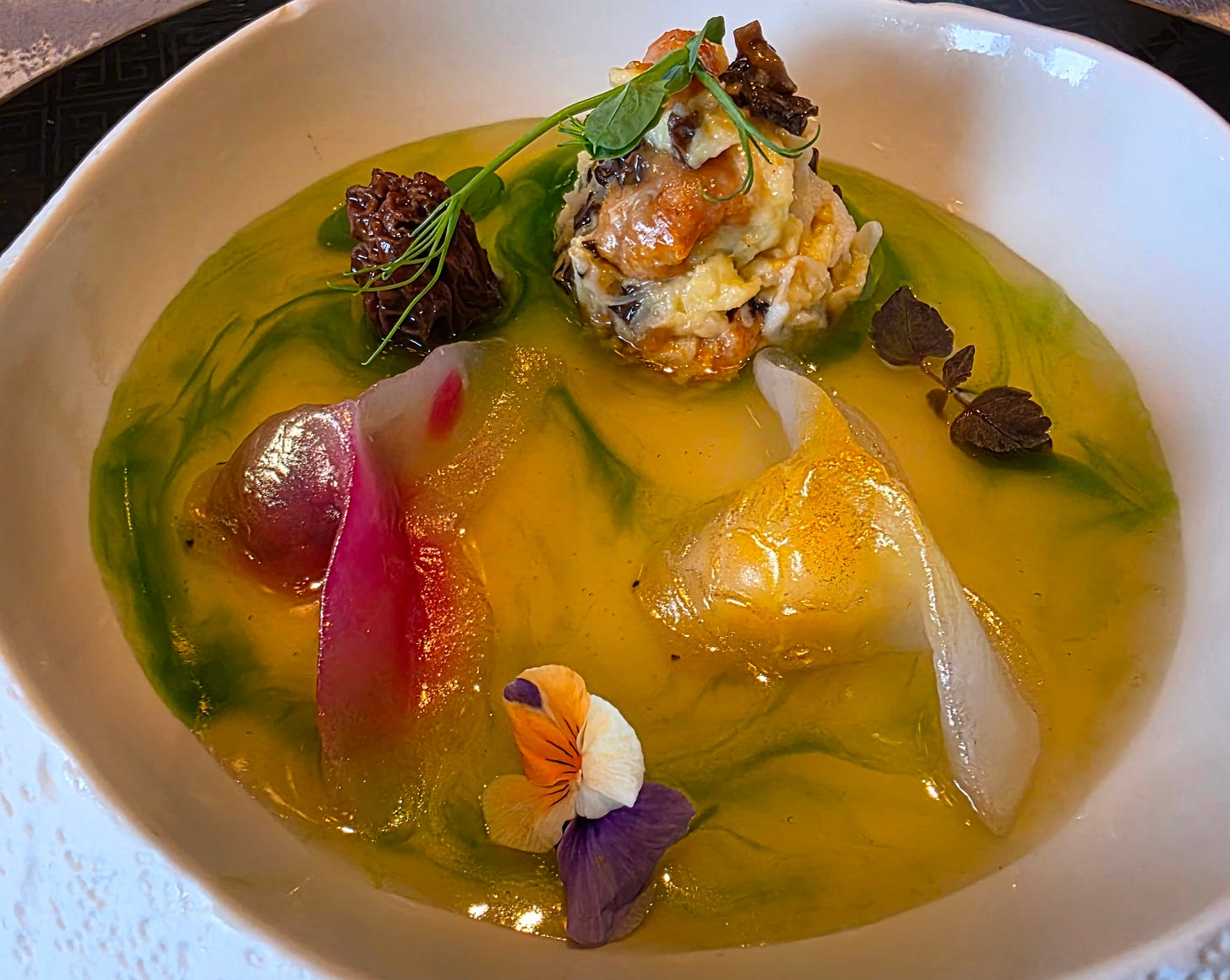
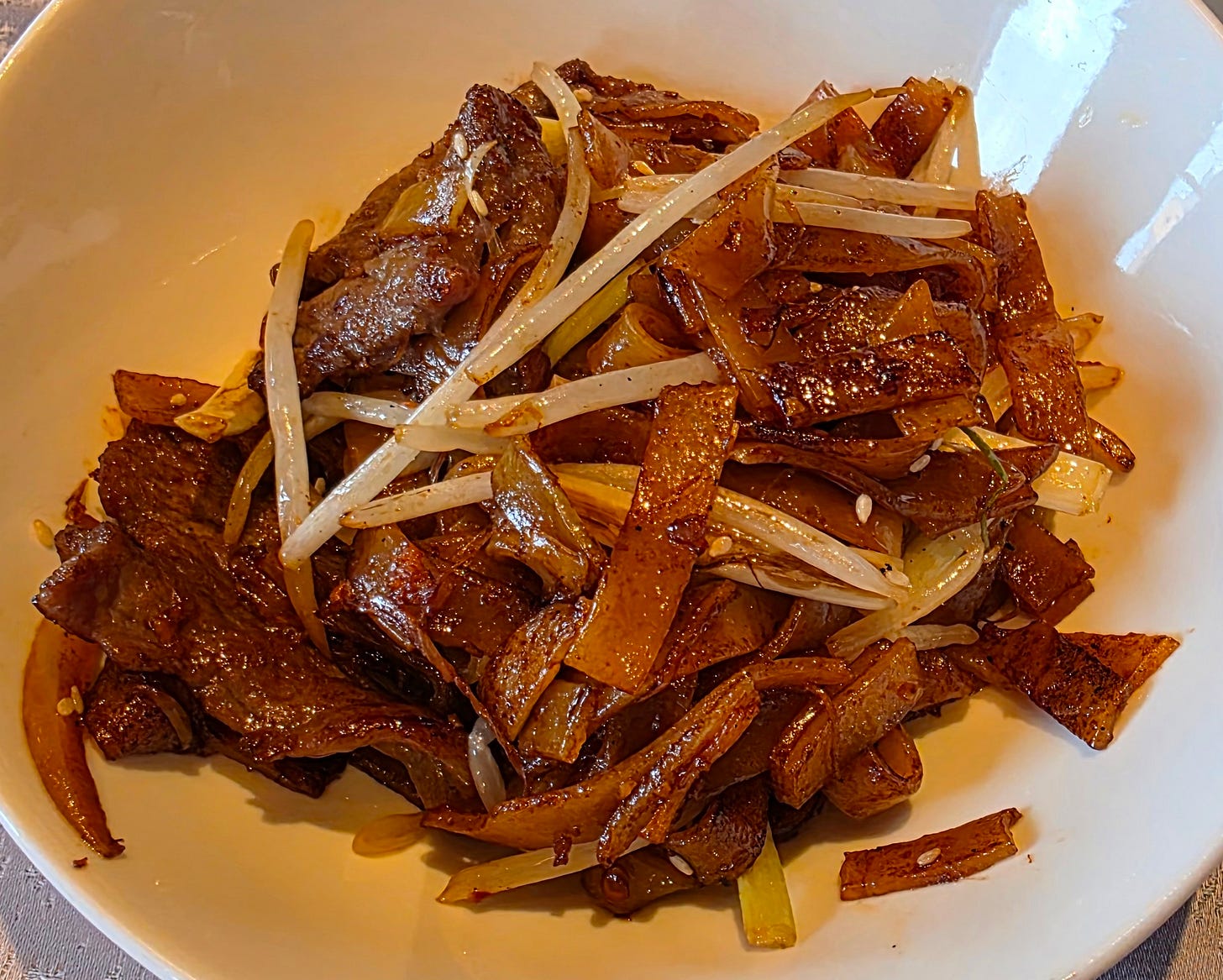
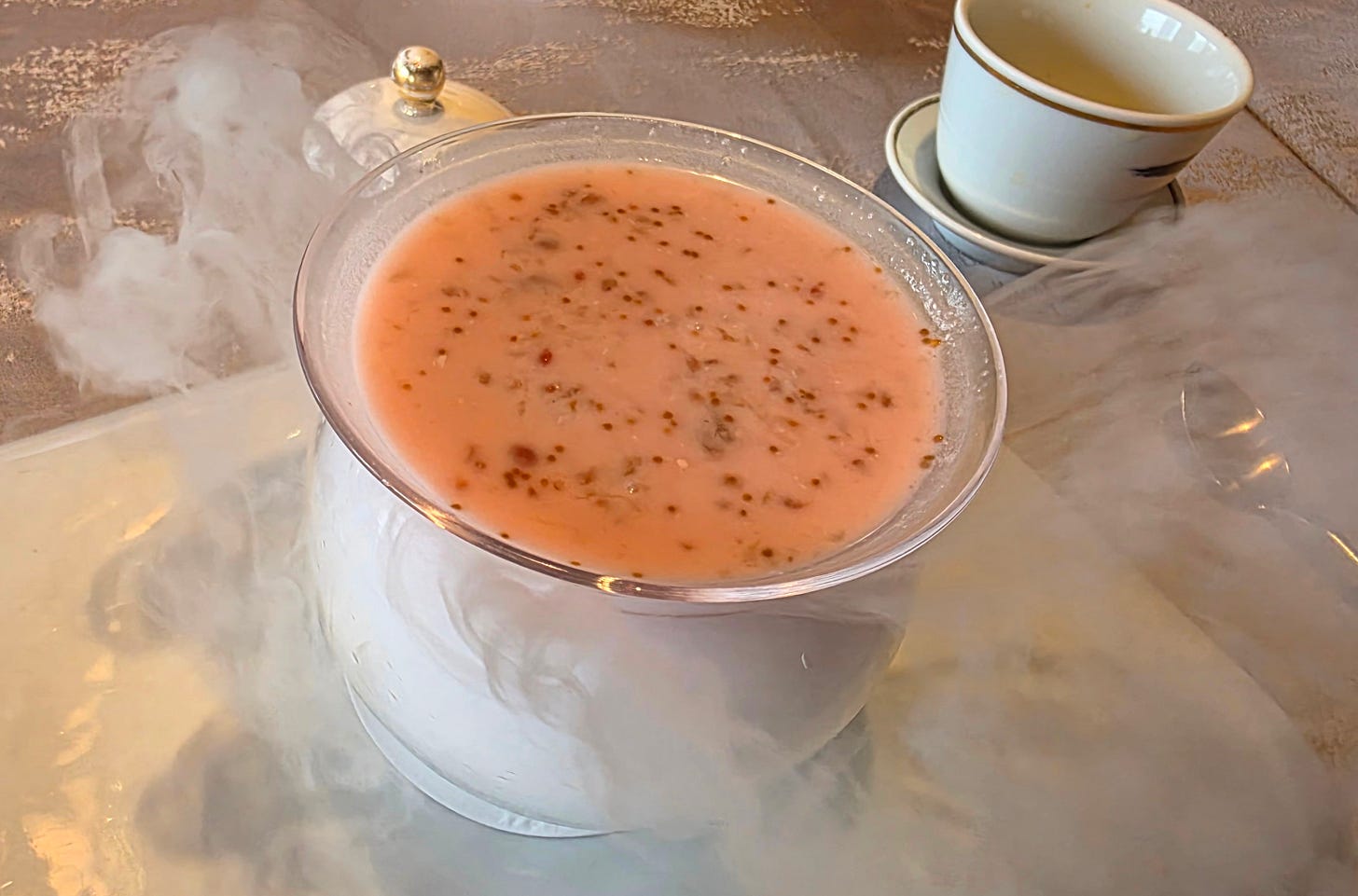
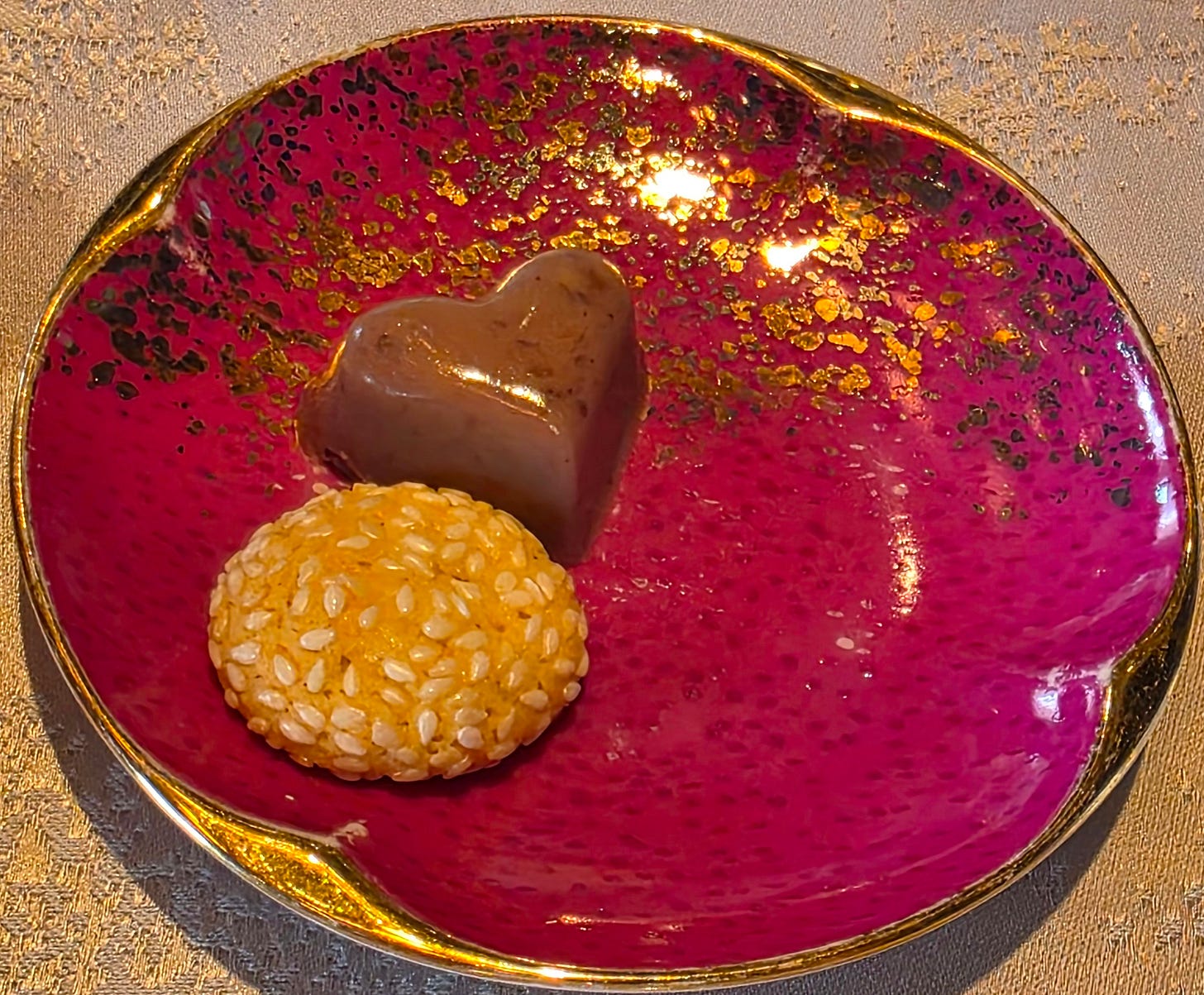
Wow, that bill for 2 is very steep for a non tasting menu! I would expect abalone, sea cucumber, the whole sea to be served (just kidding ofc). We just did a private room, sea view, one star, and the minimum charge was the same as your bill.
My Legacy House and Tin Lung Heen reviews are ready but queued, you beat me to posting Cantonese dim sum first. Ha!